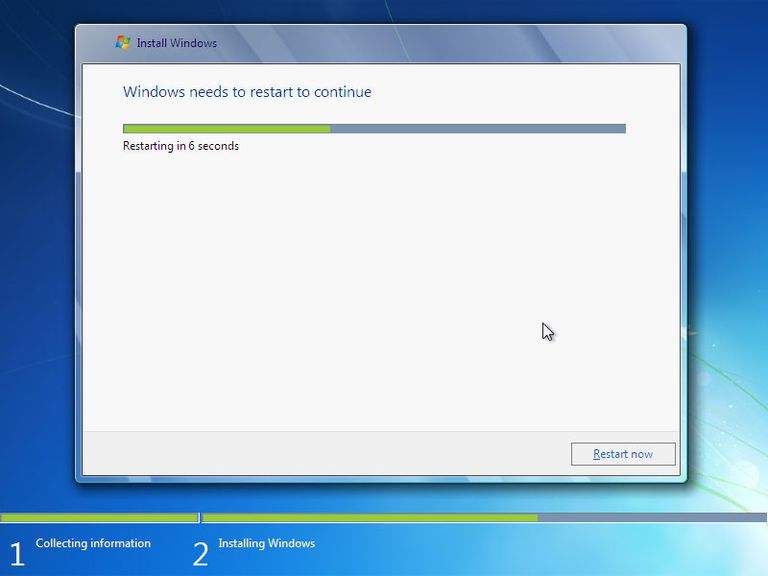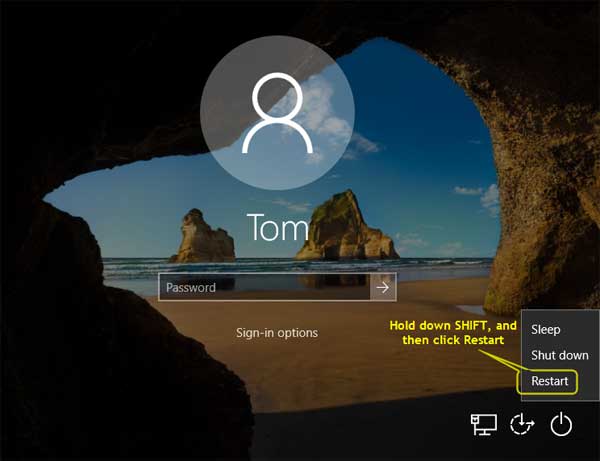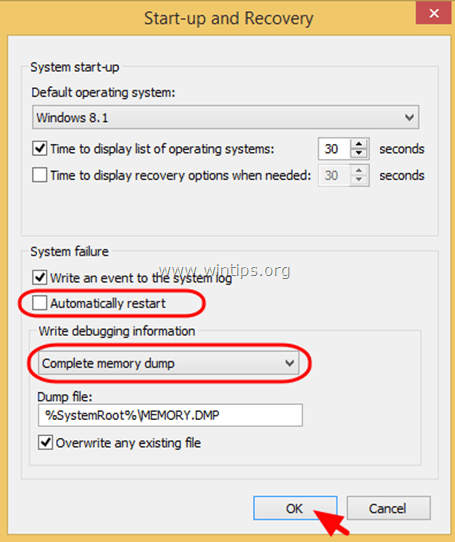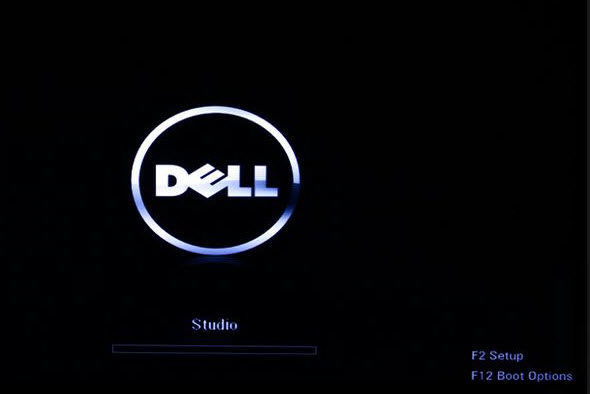Another way is, restart your computer and press the F8 key repeatedly until the advanced boot options menu appears. Click a keyboard layout on the system recovery options menu and press next. Select your account and enter the password. Select Dell factory tools or Dell factory image restore, then click Next. Next to yes, click in the box, reformat the hard drive and reboot software to factory condition and click next.
Wait for the resetting process, then click on Finish to restart the computer. But if your laptop happens to have a password, which you no longer remember, there is another way to perform a system restore. First, from the Welcome screen, restart your laptop while holding down the Shift key. This easy combo allows you to access advanced boot menu options.
Once the menu comes on, select "Troubleshoot" and click on "Reset this PC." Here you will erase all data, including the forgotten password, and reinstall Windows 8. You need to make the recovery media, insert that in the USB port or DVD drive, which would be suitable for you. Shut down your laptop and then restart it. When you see the Dell logo on your laptop's screen then press the F12 button continuously you will have to prepare a one-time boot menu. Look for UEFI BOOT and choose the device that suits your media type, either USB or DVD. Choose the keyboard language which you want to use.
Then go for Troubleshoot when you see the options to choose on the screen. Eventually, select the option to Recover from a drive. To restore via Windows 10, firstly click Start. Under Advanced startup, select troubleshoot.
Then follow the instructions on the screen to complete the reset process. First, backup your important files on a hard drive or in your Google account. Press Start and then type Control Panel, then search for recovery. Then select Recovery and open System restore, then click Next. Choose the restore point that is linked to the problematic app, driver, or update. You can also follow another process through Windows 10.
Select keep my files if you don't want to lose important files. Follow the instructions on the screen to complete the process. The BIOS of the original IBM PC and XT had no interactive user interface. Options on the IBM PC and XT were set by switches and jumpers on the main board and on expansion cards. Starting around the mid-1990s, it became typical for the BIOS ROM to include a "BIOS configuration utility" (BCU) or "BIOS setup utility", accessed at system power-up by a particular key sequence. This program allowed the user to set system configuration options, of the type formerly set using DIP switches, through an interactive menu system controlled through the keyboard.
The floppy disk was supplied with the computer, and if it was lost the system settings could not be changed. The same applied in general to computers with an EISA bus, for which the configuration program was called an EISA Configuration Utility . If you are a Windows 8 or 10 user and you have forgotten your Dell laptop's password, you don't have to worry about it because you can factory reset Dell Inspiron 1525 without password.
Go to settings and select "update & security" and reset this PC. Resetting your PC to factory settings will erase all data on the hard drive and anything that you installed on your computer after you received it. After copying your files, restart your computer.
As the computer is turning on, press and hold the "F8" key before the Windows logo appears. If you've bought a Dell computer recently, you probably noticed it didn't come with the backup and recovery disks of the past. To reformat your Dell desktop or laptop, you'll either create a disk or USB Memory Key, or you'll use the factory image located on your hard drive. Even with all the precautions, you take before resetting a Dell laptop to factory settings; it is still very likely that you could lose some of the data on the device. If this happens, it is necessary to have a data recovery program that will allow you to scan the laptop's hard drive for the missing data and easily recover it.
One of the best tools for this task is Recoverit Data Recovery. It comes with one of the highest data recovery rates in the business, allowing users to easily recover the data on the device regardless of the reason for data loss. Today, I had some troubles in factory resetting my Dell Inspiron 15 laptop. I turn on the power button, and then press F8 key, it did not get the boot menu up to factory reset.
What should I do to restore dell to factory settings? You can reset the system to factory settings by following the same procedure, but log in as a system administrator. Next, selectDell Factory Toolsand thenDell Factory Image Restore. SelectNextto display theConfirm data deletion menu. You must confirm that you wish to format the hard drive, restore system software and settings to their original condition. The BIOS in modern PCs initializes and tests the system hardware components (Power-on self-test), and loads a boot loader from a mass storage device which then initializes an operating system.
More recent operating systems do not use the BIOS interrupt calls after startup. If you don't have an admin account, shut down and restart. While the computer is booting, press F8 to enter the Boot menu and boot in safe mode. Select Run from the start menu and type control userpasswords2. Select the account and select reset option.
Type a new password into new password and confirm and your done. The restore process can be completed in a few steps by computer users with rudimentary knowledge of computer systems. Select the Repair your Computer option and press Enter. Then the System Recovery Options screen comes.
Later, choose your keyboard's layout, and click on Next. The System Recovery Options window will popup, click System Restore, it will check the data in your Restore Partition and factory reset laptop without password. First of all, restart your Dell computer. When the Dell logo appears at the computer screen, press the F12 key on the keyboard every two seconds to enter the one-time boot menu. Then use the arrow keys to select Diagnostics and then press Enter on the keyboard. And follow the on-screen instructions to complete the diagnostic procedure.
The reasons behind the Dell laptop screen black are complicated. Among them, the bad connection between graphics drivers and operating system is the most common one. Restoring your Dell laptop to its out-of-box state will delete stored data and reset any previously saved settings. So, before moving forward with the reset, make sure to backup all of the files you would like to keep. Backup can be created with the help of an external hard drive or by using cloud storage, such as Google Drive or Dropbox. But one of the easiest ways to backup your data is to create backup during the actual resetting process.
You may find there is no dell factory image restore option to perform factory reset for Dell computers, don't worry, it's been solved. It can be used to reinstall Windows and remove files, settings, and applications. The most extreme step is to reseta Dell computer back to factory settings, or to settings that were saved at an earlier time. This will restore the computer's original software state. First, turn on your computer and look for any messages which appear before the Windows logo.
Some laptops and PCs come with a 'hidden' hard drive on which is a full backup of Windows. Typically there will be a message such as "Press F10 for restore options". Each PC is different, but you may find an option to reset the PC to factory settings. What this does is to delete everything on the hard drive and copy the hidden version of Windows back on to the hard drive so your computer will be exactly the same as the day it left the factory.
The BIOS firmware comes pre-installed on an IBM PC or IBM PC compatible's system board and exists in UEFI-based systems too. The name originates from the Basic Input/Output System used in the CP/M operating system in 1975. The BIOS originally proprietary to the IBM PC has been reverse engineered by some companies looking to create compatible systems.
The interface of that original system serves as a de facto standard. When your computer gets hanged, restart your system. It is not the usual way of resetting your laptop. It is a forced way to reboot the computer.
Just power off by pressing the Power button for 10 to 20 seconds till the power light goes off. Then disconnect the power cord or AC adapter and if there is an option of removing batteries in your Dell Inspiron then remove the cells. Detach all peripherals like additional memory cards, USB drives, mice, keyboards, printers, and others.
Windows XP users can access the recovery partition created by Dell and restore their Windows XP to the factory settings by following these instructions. How to factory reset a Dell laptop without password. Click the "Power" icon on the login screen and while holding "Shift", select "Restart". Select the "Troubleshoot" option after your computer restarts. Choose to "Reset your PC" and go to the "Next" option.
After this is done, select "Just remove my files". Resetting a used Dell laptop to its factory settings is the easiest way to clear viruses and unwanted programs. But it is important to create a backup before moving forward with the reset; otherwise, you risk losing your files, documents, and programs. Also, there is more than one way to perform a Dell reset, so you can always try an alternative if one of the methods does not work. And please, follow the guide step-by-step to avoid bricking your laptop or erasing an operative system altogether.
A factory reset restores a PC to the same state it was in when it rolled out of the manufacturer's assembly line. Almost all electronic devices have this capability, and you can't undo it once you start. A Windows 10 factory reset will wipe your Dell laptop of all installed programs and files, so you don't want to lose data.
How To Reset A Dell Computer Windows 10 The factory reset is a way of restoring an electronic device such as computers to its original state by erasing all of the stored information. After this process, your hard drive contents will be wiped off completely. Hence, it is safe to take a backup of all the important files and information. One is through the built-in recovery partition.
Firstly make sure your laptop is charged or connected to a power source. Next, go to the power button while holding the shift key, then press restart. Once the computer restarts, click on Troubleshoot. If you have important files that you don't want to lose, then select keep my files. Finally, answer the series of questions and select Reset. Historically, the BIOS in the IBM PC and XT had no built-in user interface.
The BIOS versions in earlier PCs (XT-class) were not software configurable; instead, users set the options via DIP switches on the motherboard. Later computers, including all IBM-compatibles with CPUs, had a battery-backed nonvolatile BIOS memory that held BIOS settings. These settings, such as video-adapter type, memory size, and hard-disk parameters, could only be configured by running a configuration program from a disk, not built into the ROM. A special "reference diskette" was inserted in an IBM AT to configure settings such as memory size.
In modern PCs running modern operating systems the BIOS interrupt calls is used only during booting and initial loading of operating systems. Before the operating system's first graphical screen is displayed, input and output are typically handled through BIOS. Operating systems and executive software that are designed to supersede this basic firmware functionality provide replacement software interfaces to application software. Applications can also provide these services to themselves.
This began even in the 1980s under MS-DOS, when programmers observed that using the BIOS video services for graphics display were very slow. To increase the speed of screen output, many programs bypassed the BIOS and programmed the video display hardware directly. In Recovery Mode, there will be many options, but you need to select See advanced repair options. Then click on the troubleshooting option, and after that Advanced options, you need to choose. Finally, click the Windows Startup Settings option. Now you are supposed to restart your laptop.
After that, you will have an Advanced Boot Options menu that allows you to boot process but in safe mode and will give you three options. Restoring your Windows factory image by accessing the recovery partition will delete all files from your computer. This action restores your computer to its default settings.
It's also probably blue-screening before restarting. You can turn that off by going into Control Panel, then System, then "System Properties", then "Advanced", then "Startup and Recovery". Look in the middle of that window for System Failure and uncheck the box that says "Automatically restart".























